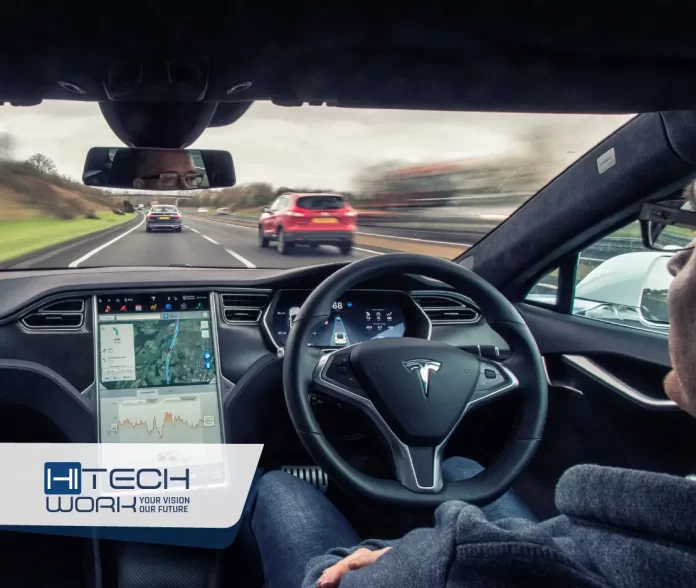Do you want to find out more about the Tesla autopilot? You have clicked on the right article; in this ultimate guide, we are going to discuss the autopilot function in detail.
What is Tesla Autopilot?
The Tesla Autopilot is an advanced assisted driving system (AADS) that helps a driver with dynamic driving tasks. It was first available in September 2014 and used in models including the Tesla Model S, Tesla Model X, Tesla Model Y, and Tesla Model 3. This function amounts to partial automation or semi-autonomous cars and adds a new experience to self-driving vehicles.
It enables your vehicle to automatically accelerate, steer, brake, and perform some other basic tasks. However, Tesla frequently releases new advanced features via software updates. When you buy a new Tesla, it offers a base autopilot with features like Autosteer and traffic-aware cruise control (TACC).
| NOTE: Remember that when you use Tesla Autopilot, you must always supervise the system. Keep your hands on the steering wheels and your eyes on the road, and be prepared to make elusive maneuvers. |
So, Which Makes the Autopilot Function Possible
Tesla makes the future of driving with 40X more processing power and advanced sensor technology. Here, we have shared the technology that makes the autopilot function possible.
- Radar: The forward-facing radar helps the drivers navigate through dust, heavy rain, smog, and heavy traffic on the road.
- Cameras: Almost 8 cameras offer 360-degree visibility to the drivers, even at the scale of 250 meters.
- Braking system: Tesla also has a high-accuracy digitally-controlled electric assist braking system.
- Ultrasonic sensors: Tesla’s vehicles have almost 12 long-range ultrasonic sensors that sense everything within 16 feet away from the car.
With the help of these radars, cameras, braking systems, and sensors, Autopilot responds to the vehicle’s surroundings. The robust onboard PC processed all information within milliseconds.
Features
Tesla Autopilot has two features: traffic cruise control and Autosteer.
- Traffic Cruise Control: Traffic cruise control, also known as adaptive cruise control (ACC), lets your car assist the driver with maintaining a constant speed and distance relative to the vehicle in front of it. The feature automatically adjusts the speed of your car with the radar and forward-facing cameras. It works similarly to the traditional cruise control, matching the traffic and setting the initial speed as an upper limit.
- Autosteer: Autosteer is also known as lane keeping assist (LKA) that maintains your Tesla position within a marked lane during straight driving and wider turns. To keep your vehicle centered, the cameras around the car track the position of road markings. The sensor monitors other vehicles on the road to keep the distance.
When the Tesla Autopilot does not Work?
In the below-mentioned circumstances, the Autopilot does not work well.
- When the road markings are blurred.
- The car is traveling below 20 mph.
- Driving in residential zones when there are street lights and stop signs.
- When the steering wheel does not sense the driver’s hands, the car will start to slow itself till either the car stops or the driver takes control.
- The vehicle battery charge level is low and showing a warning battery charging warning.
- Cameras and front-facing radar on your vehicle can’t provide accurate visual data. Rain, snow fog, hot or cold temperatures and dirt and debris on the camera can cause the power visibility.
- The vehicle has exceeded the maximum speed limit that a driver is set in autopilot settings.
What Level of Autonomy Does the Tesla Autopilot Offer?
Automated driving has six levels, from level 0 (has no automation) to level 5 (has full driving automation). However, the Tesla autopilot has a level 2 system, which is capable of partial driving automation.
The level 2 system controls lateral and longitudinal subtasks, including lane centering and adaptive cruise control. When a driver turns off the system, applies the brake accelerator, and overrides the steering, Autopilot releases its hold on the vehicle ASAP.






